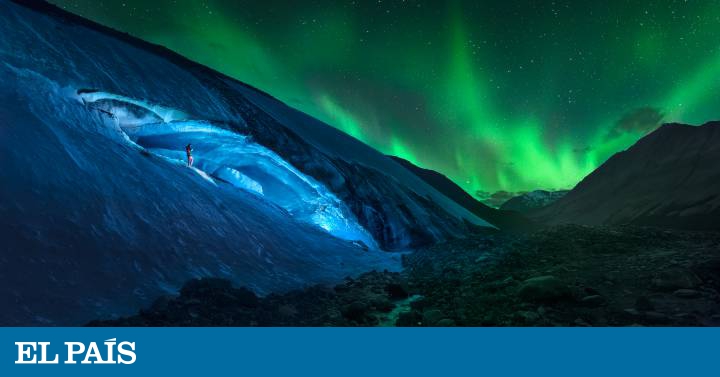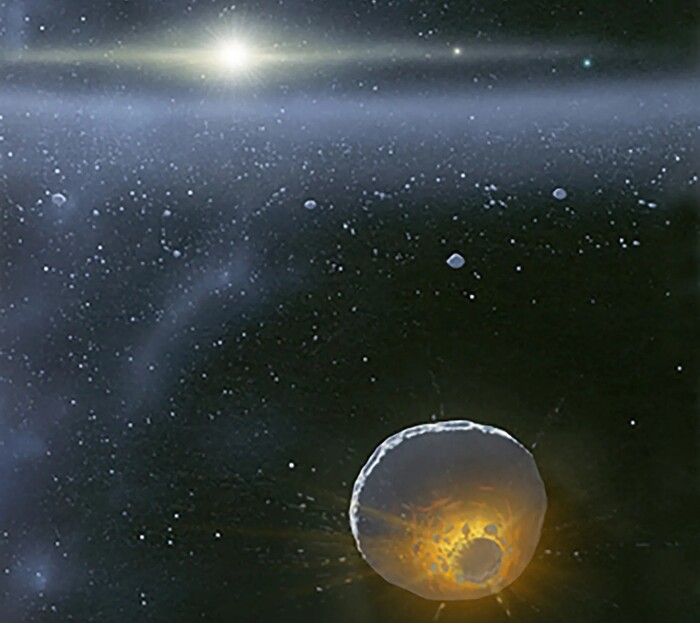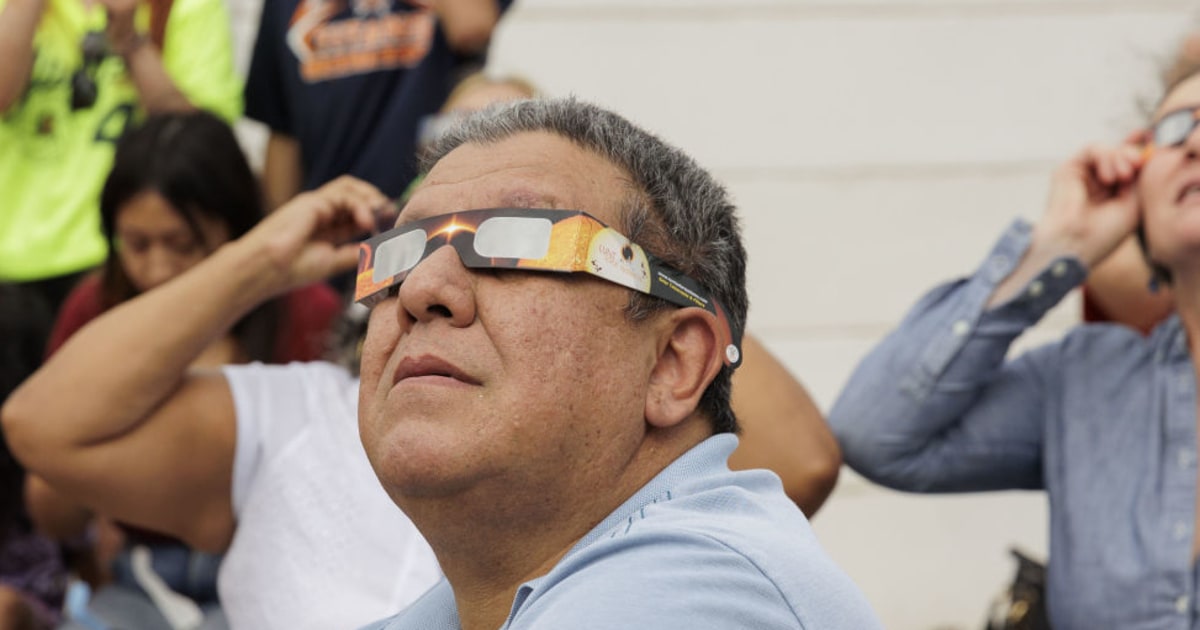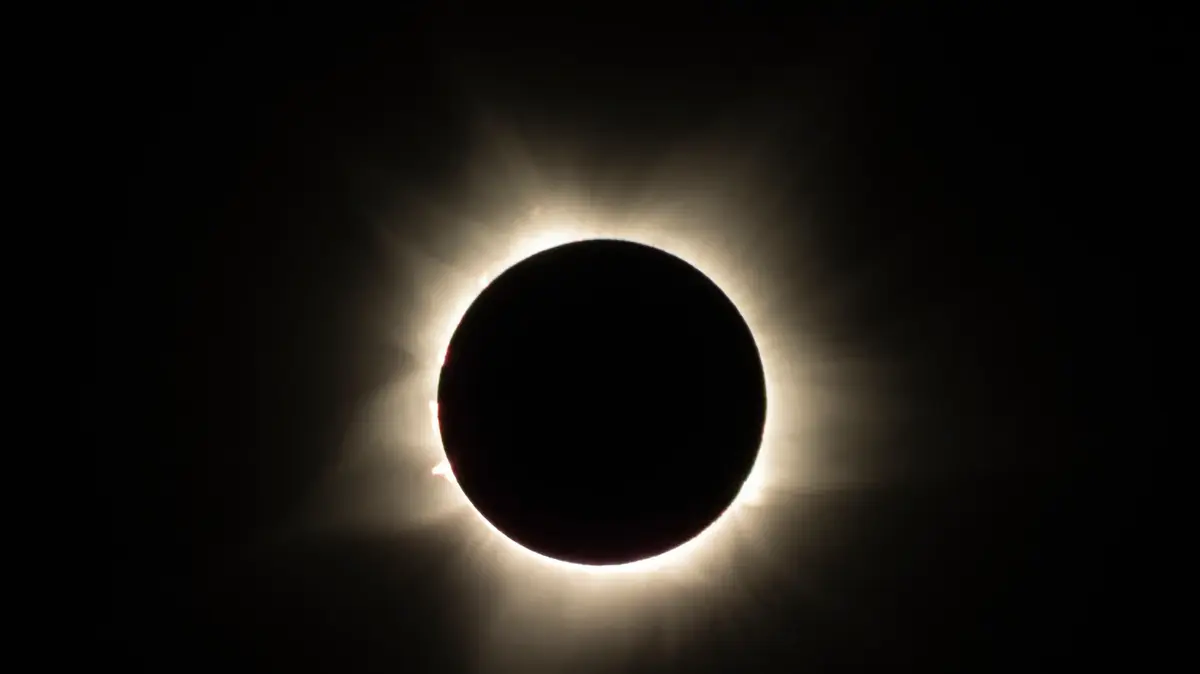MORE INFORMATION
- At lonelyplanet.es and in the new astronomical tourism guide 'Cielos Oscuros'
After touring the entire planet, we still have another challenge: looking at the sky to open up to other worlds. More and more people join astronomical tourism and travel to places where it is easier to contemplate the nightly ritual of the stars rotating over our heads. As the associations of astro- tourism and astrophotography increase , meetings and trips proliferate with the sole objective of observing phenomena such as eclipses or the northern lights in situ. And it is that the movement to recover darker skies is unstoppable. Astrotourism also has an advantage: without leaving home, we can also contemplate the vast vastness of our universe and its many mysteries. Next, a route through observatories around the world to discover the so-called reserves of dark skies , places of extraordinary visibility where to merge with the sky.
Uluru or Ayers Rock (Australia)
This red rock of three and a half kilometers in length in the middle of the desert is one of the most recognizable and revered natural landmarks of Australia. Located in the so-called outback , the vast and unknown heart of the country , this sacred monolith for the aborigines is far from any large city - Alice Springs , the closest, is about a five-hour drive away - , allowing you to see a magnificent starry sky. Visiting Uluru at night, also known as Ayers Rock, is a unique experience: there are guided astronomy circuits that include a stargazing session. A track for lovers of astrophysical phenomena, in 2028 a solar eclipse can be seen from here , although not in its entirety, so it is recommended to travel a little further to the northeast of Australia where it will look complete.
Salar de Uyuni (Bolivia)
High in the mountains, near the Andean peaks of Bolivia, several prehistoric lakes form the Uyun i salt flat , the largest salt flats in the world, and, due to its spectacular nature, also one of the most popular and recurring images in the Instagram travel accounts. There are more and more opportunities to visit this salt flat at night and enjoy its starry sky and wide horizon . As it is a practically undeveloped area, the skies are really dark. And the plain of the salt mines makes the light in them travel far, so once you get to the point of observation, you have to give the eyes time to adjust.
There are operators that offer specialized stargazing itineraries, with circuits of between two and six hours that combine the contemplation of sunrise or sunset with a session of stargazing. You can discover star showers , planets , the Milky Way and the Magellanic Clouds , the two dwarf galaxies that until recently were thought to orbit around our own.
Lençois Maranhenses National Park (Brazil)
This natural space is a sea of sand on the northeast coast of Brazil and one of the most striking national parks in the country. Its more than 1,500 square kilometers of dunes are reminiscent of a huge wasteland, although they receive almost five times more rain than an ordinary desert.
Due to its annual dance of wind, water and sand, the park is not very urbanized, and this has contributed to keeping its night sky intact and facilitating stargazing. The park is only two and a half degrees south of the equator , so the night sky view includes both the southern and northern hemisphere constellations .
Jasper National Park (Canada)
The International Dark-Sky Association (IDA) sets standards for preserving and protecting dark places through responsible lighting policies . And, in parallel, some countries apply their own conservation parameters. Canada is one of them, and Jasper National Park is one of its 10 reserves for this purpose. Located in the Rocky Mountains , it is famous for its alpine lakes and spectacular sunsets , but it also increasingly attracts astrotourists eager to snap postcards of the universe after a day of outdoor adventure.
The low light pollution, guaranteed by its status as a dark sky reserve, allows you to clearly see the stars, the Milky Way and even the northern lights in the dark winter months. Every year, in October, the Jasper Night Sky Festival is celebrated , one of the largest of its kind in the world, although in Canada there are many other events of this type. It brings together speakers, astronomers and the general public who enjoy learning more about the sky every night. All this seasoned with gastronomic events, symphonic music and astrophotography sessions.
Torres del Paine (Chile)
The granite pillars of the Torres del Paine rise almost vertically on the Chilean steppe and are one of the natural jewels of South America. It is an overwhelming territory of sharp mountains, valleys, glaciers, rivers and lakes in southern Chile. Due to their altitude ( 2,600 meters ) and geographical location, they enjoy a rainy autumn and a cold winter with a probability of snow, so the ideal is to visit them in the southern spring and summer , with longer days, which include several weeks in those that the night stays in a twilight light (between the end of November and the middle of January). To take advantage of the limited darkness in the months when the sky is clear, you must plan your arrival in advance and observe at dawn. But it's worth it: Torres del Paine is a formidable natural backdrop to see the Milky Way, the Magellanic Clouds and the southern sky. The best season to see the stars is between October and April , with dark nights. In December 2020 an eclipse of the sun can be seen here , but partially.
Hortobágy National Park (Hungary)
More and more countries are proud of their places with dark skies, such as Hungary, where there are already three certified areas, including the Hortobágy National Park , in the east of the country. Its wide swamps and meadows are ideal areas to see the stars. A flat landscape and the relative absence of trees guarantee an almost uninterrupted view of the sky.
Constituted as the first national park in the country, the Hortobágy reserves part of its surface since 2011 for the contemplation of the dark sky. Among the many measures taken, every effort has been made to update the lighting of nearby towns to lessen their impact. In addition, the park is home to interesting wildlife, such as wolves, wild horses, and jackals , and is also a regular stop for migratory birds . At night, the park offers various astronomical activities, including walks, astronomy talks, and the Fecskeház Youth Hostel and Field Study Center, a hostel and study center that includes an observatory and guided observation program on clear nights.
The starry sky of Zselic (Hungary)
Two hours from Budapest, towards the Croatian border, the Zselic Star Park is one of the best in Eastern Europe for stargazing. It was one of the first dark sky areas on the continent (since 2009) and offers magnificent pristine night skies. In addition to an observatory with telescopes, it has a planetarium for all ages, an exhibition on astronomy and nature, a collection of meteorites and a five-story viewpoint to get even closer to the stars. On weekends there are night observation programs. Zselic also provides an opportunity to see the phenomenon of zodiacal light , a dim, elongated light believed to be the reflection of sunlight on ice and dust particles at the plane of the solar system, and which is almost always go in spring and summer .
The Jökulsárlón glacier (Iceland)
One of the most extraordinary sites, of the already extraordinary Iceland, is the Jökulsárlón glacial lake , in the southeast of the island, between the tip of the ice cap and the Atlantic coast. This wide lake formed by a retreat of the glacier has very easy access from the ring road that runs through the island. During the day, you can explore impressive ice caves , contemplate the power of glaciers or go on boat tours . At night you can enjoy stargazing. But here what is extraordinary is the contemplation of the northern lights . And when it is not seen it is compensated by the vision of the Milky Way, meteorites and planets- In addition, and as in other places of dark skies located near water, in the right conditions you can see the reflection of the stars among the icebergs from the glacier lagoon. The total solar eclipse of 2026 will be seen from Iceland.
Mount Bromo (Indonesia)
Located in the heart of East Java , this mountain is one of the biggest attractions in Indonesia . Travelers come to climb around this active volcano to see the sunrise, a spectacular display of colors in the morning sky, and also to explore the surrounding caldera and other active volcanoes. Mount Bromo, at 2,329 meters above sea level , is part of the Bromo Tengger Semeru National Park, which covers 777 square kilometers and houses five volcanoes and the so-called Tengger sand sea , a unique desert ecosystem in these latitudes. During the day you can go hiking in the park or hire a guided off-road circuit to see these unusual geological accidents. At night is the time for astrotourism.
As astronomers flock to observe and astrophotographers photograph the Milky Way, the Andromeda galaxy, and the Magellanic Clouds, Bromo is gaining discreet fame as a stargazing destination in Indonesia. In this place one is located less than ten degrees south of the equator , so the mountain and its surroundings are also a good destination to see the southern night sky and meteor showers like the southern Taurids.
Kerry Dark Sky Reserve (Ireland)
A dark sky reserve is an area of night skies surrounded by populations that reduce light pollution to protect it . In Ireland we find one of these areas designated by the International Dark-Sky Association in County Kerry , in the province of Munster (in the southwest of the country). Visitors to the Ring of Kerry , the longest coastal route in the Atlantic, looking for spectacular castles and mysterious stone circles may not even know they are next to a world-class dark sky setting. The reserve occupies 699 square kilometers and includes several small towns, so light pollution is scarce. At night, even the most seasoned astronomers are able to differentiate the constellations between so many stars in their sky. The park has a guide service specialized in night observations. The best months to enjoy clear skies are from July to September .
Makhtesh Ramon (Israel)
Although it is called a crater, the Makhtesh Ramon, in the middle of the Negev desert , really is not. It was not created by the impact of a meteorite or a volcanic eruption, but by erosion over millions of years. It is in a sparsely populated area in southern Israel and therefore offers excellent opportunities to see stars thanks to its low light pollution, which is greatly contributed by the desert climate that protects the night sky. In 2017 it was designated a dark sky park, the first of its kind in the Middle East. The Makhtesh Ramon is also a wonderful place to view the region's unique fauna and flora , from foxes, gazelles, and leopards to wild horses. There are also guided night sky tours with various Mitzpe Ramon operators.
Iriomote-Ishigaki National Park (Japan)
In the Okinawa prefecture, the southernmost of Japan, in the East China Sea, is the Yaeyama archipelago, with the islands of Iriomote, Ishigaki, Kohama, Kuro and Taketomi, which make up the Iriomote-Ishigaki National Park. In 2018, it was designated as the first dark sky park in the country, due to its remote location and low urbanization . It is the last border in Japan covered by dense jungles and mangroves and surrounded by some of the most beautiful coral reefs in the country, where you can only get there by plane and ferry. As part of the effort to receive dark park certification, the area developed a plan to update and reduce light pollution that has made this prime location an astrotourism destination. Here you can also visit the country's space launch facilities, the Tanegashima Space Center and the Uchinoura Space Center, which are open to the public when no launch is scheduled.
Erg Chebbi (Morocco)
If you want to visit North Africa and are looking for a good night sky, Morocco can be the ideal destination. Aside from seeing its main landscapes and cities, travelers can gaze at the stars on an itinerary from major coastal cities to the arid pre-Saharan landscape. Erg Chebbi and its central town in Merzouga are one of the best places to have a clear view in all directions and to see the Milky Way. But it is also a splendid place to take a camel ride and discover the traditional life of the desert . There are special stargazing excursions, with lodging in a desert camp. In Morocco there is also the Morocco Oukaïmeden Sky Survey (MOSS) , in the High Atlas.
Aoraki Mackenzie Dark Sky Reserve (New Zealand)
New Zealand has long been a haven for astronomers, and is attracting more and more astrotourists. This reserve, located in the heart of the South Island , is one of the best places in the country to see the sky at night. It is made up of Aoraki / Mount Cook National Park and the Mackenzie Basin . In 2012 he received the Dark Sky Reserve Certificate. Visitors gather at the Mount John Observatory for stargazing, and on clear winter nights the dawn is sometimes seen. The observatory offers circuits to see and admire the night sky through one of its many telescopes, including one of 1.8 meters for academic research in collaboration with Japan and one exclusively for tourist use.
Albanyà (Spain)
Near the border with France, in the Girona region of Alto Ampurdán , this Catalan town does not usually appear on tourist itineraries. However, it is a must for astrotourists, as it is the first place with a dark sky designation in Spain , certified by both the Starlight Foundation and the International Dark-Sky Association . Here we will find one of the most starry skies and free of light pollution in Catalonia. Now, astrotourism is one of the main claims of the people.
The Albanyà Observatory opened in 2017 with a 40-centimeter telescope, which is another magnet for lovers of the night sky. You can also contemplate the stars on your own in places like El Casalot and El Pla de la Bateria , open to the public but without specific activities. The advantage is that there are fewer people and astrophotographers capture unique images.
Northumberland International Dark Sky Park (England)
Attached to Hadrian's Wall and the border between England and Scotland is the largest protected area for dark skies in Europe: the Northumberland International Dark Sky Park . Established in 2013, it is one of the best places in the UK for that purpose. In it, 1,593 square kilometers of nature can be explored day and night, comprising both the Northumberland National Park and the adjoining Kielder Water & Forest Park . The Northumberland park was the first of its kind to combine two parks under a single dark sky certification.
It can be reached from Edinburgh , Newcastle and Carlisle . As a complement, in Edinburgh you can visit the Kielder Observatory and attend one of its astronomy conferences or its events around the night sky.
Cosmic Campground (United States)
This cosmic campground is one of the darkest places in America and one of the few places in the world certified as dark sky "sanctuaries". They are all in remote corners (the other in this country is the Rainbow Bridge National Monument in Utah).
It is a small park, barely 1.4 hectares in size (14,000 square meters) of pristine night darkness in the heart of the protected areas of Gila Wilderness and Blue Range Wilderness , in western New Mexico. It is much less well-known than other parks in this southern state, such as the White Sands National Monument or Carlsbad Caverns National Park , but it is a pilgrimage site for astrotourists.
The closest relevant artificial light source is more than 64 kilometers away, in Arizona, so there are few darker sites in the entire country. There is only very basic camping infrastructure ( pit toilets and no electrical connections) and the traveler should take a telescope and install it on one of the designated observation pitches outside the camping area, where you will enjoy an uninterrupted night sky.
San Pedro de Atacama (Chile)
Located on an arid plateau in the Andes mountains, in the northeast of Chile , the small city of San Pedro de Atacama is a magnificent stargazing destination in the middle of a desert with an always clear horizon. It is one of the main tourist destinations for adventure and astronomy in the South American country. Thanks to its ideal situation, several observatories with international support have been installed in this region known as the Chajnantor scientific reserve. High altitude and low humidity reduce the amount of signal interference.
Few telescopes are open to the public, although some are open on Saturday and Sunday mornings, and the Ahlarkapin Observatory is a private facility run by local guides with night visits. Another option is the stargazing circuits that operate from San Pedro de Atacama, accompanied by local guides, in places with little light pollution.
Teide Observatory (Canary Islands)
Tourists often travel to Tenerife —and to the Canary Islands— in search of sun. Its facet is less known as one of the best places in the world to observe and study the sky , thanks to its geographical position and astronomical conditions (similar to those of Hawaii and Chile ).
The dark skies over Mount Teide (3,718 meters altitude) are ideal for stargazing on your own and viewing 83 of the 88 recognized constellations , but the gem of the place for amateurs and professionals of astronomical observation is the Teide Observatory, on top of the volcano. Operated by the Canary Islands Institute of Astrophysics (IAC), it has night telescopes, radio telescopes and the largest solar telescope in the world.
To visit it, you must book a guided tour in advance through the main tour operator, Volcano Teide Experience ; you cannot go without a guide. For amateur astronomers who want to demonstrate their specific astronomical theories through observation, this is one of the few observatories where access to a professional telescope can be requested.
La Palma is another Canarian destination for enthusiastic astrotourists. The Roque de los Muchachos Observatory is located on the island , where the Isaac Newton telescope was moved from the Royal Greenwich Observatory in 1984. It has 12 telescopes.
Northern lights in Greenland
Of all the Nordic territories where you can see the northern lights, Greenland is one of the least visited. The scarce infrastructure is to blame for the relative scarcity of tourism in this immense island portion of snow. The same capital, Nuuk , with only 17,000 inhabitants, allows you to see the dawn, although it is best to travel 300 kilometers north to Kangerlussuaq , the city of the Arctic dawn in Greenland. It is in the middle of a fjord west of the big island. And it is also the only place where the road to the Greenland ice sheet leaves, the immense formation of frozen water that covers much of the territory.
Another place to see auroras is Ilulissat , on the west coast, 250 kilometers north of the Polar Circle, with its frozen fjord that is a Unesco world heritage site. It is quite a challenge for astrophotographers to portray the aurora alongside the gigantic icebergs floating in Disko Bay .
Find inspiration for your next trips on our Facebook and Twitter and Instragram or subscribe here to El Viajero Newsletter.















